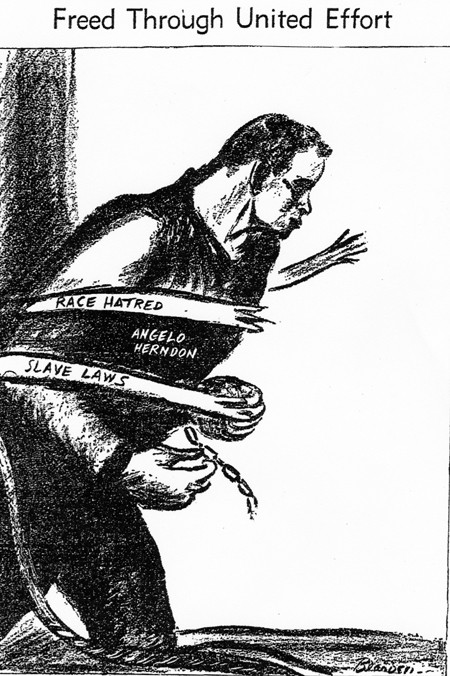Romare Bearden (1911–1989) was active as a political cartoonist in New York in 1935–1937. Born in Charlotte, North Carolina, he was part of the African American Great Migration; his parents relocated to Harlem when he was a young child and later to Pittsburgh. He visited the South and his relatives regularly during his childhood. His memories of the South and the industrial North would figure in his paintings, prints, and collages. Bearden’s later, better-known work is not political in nature; it was through the cartoons he produced in his twenties that he addressed social injustice. During my CASVA fellowship, I wrote
Bearden craved community and would find a vibrant artistic one in Harlem, as well as at the Arts Students League in New York. He knew contemporary events and came by his interest in newspapers honestly; beginning in 1927, his mother,
Bearden attended Lincoln University and then Boston University, where he had the opportunity to draw playful cartoons for the university magazine Beanpot. In 1932 he transferred to New York University. It was there that he developed a passion for cartooning; his work began to appear in the NYU publication Medley
In “The Development of the Cartoon in the United States,” an undergraduate paper written at NYU, Bearden noted the importance of the cartoonist: “This type of propaganda . . . does much more than the editorial, or news item can do. In fact, much of the average man’s opinion of the foreign nations [has] been gotten through seeing these stereotype figures day after day.” While attending NYU, Bearden also studied at the Arts Students League under German political artist George Grosz (1893 – 1959), who, Bearden later stated, was a profound influence on his life. Bearden’s cartooning would take the same direction as Grosz’s: illustrating political and social injustice. His almost obsessive interest in building an artistic community led to his involvement in founding the Harlem Arts Guild, the Harlem Community Arts Center, and the 306 Group. In 1935, Bearden took a position as a caseworker in the New York City department of social services, where he remained for almost twenty years. The job provided him with inspiration for addressing social justice and would influence his later paintings and collages.
From September 1935 to May 1937, Bearden was on the staff of the Baltimore Afro-American, the
By the late 1930s, Bearden was ready to move past cartoons and social realism to painting, never to return to cartooning. His paintings, prints, and collages, rich with memory and identity, reflect his personal history, including his time as a political cartoonist shortly before World War II.
